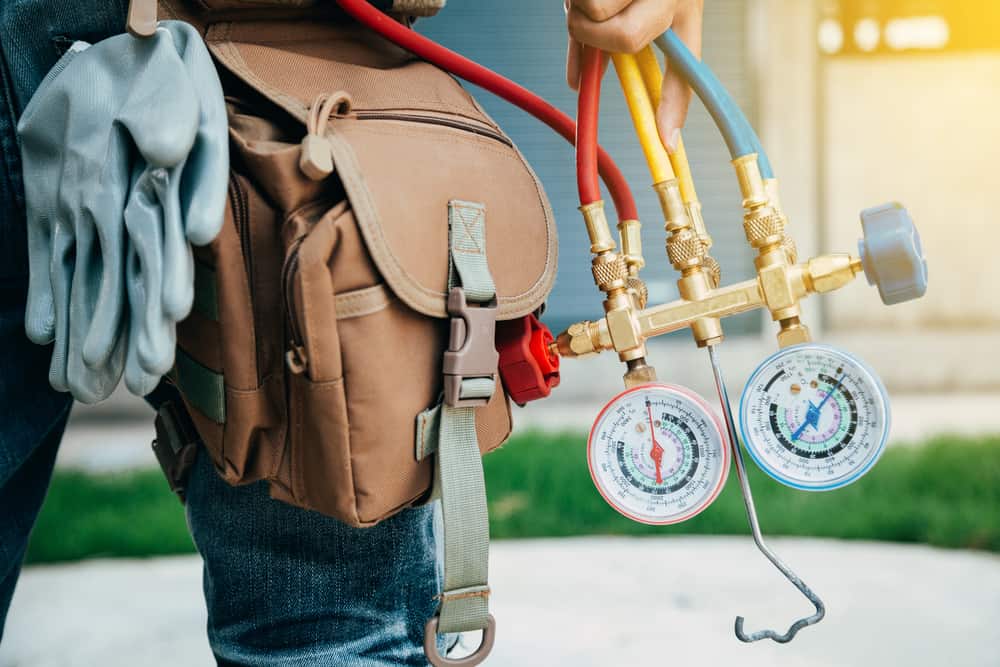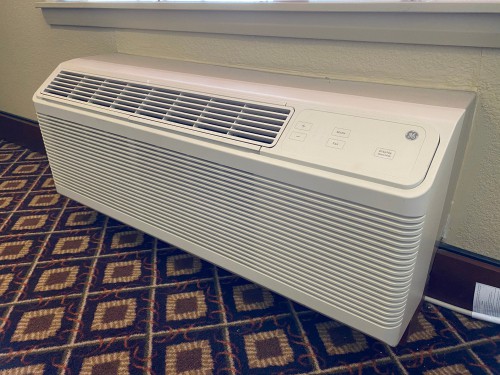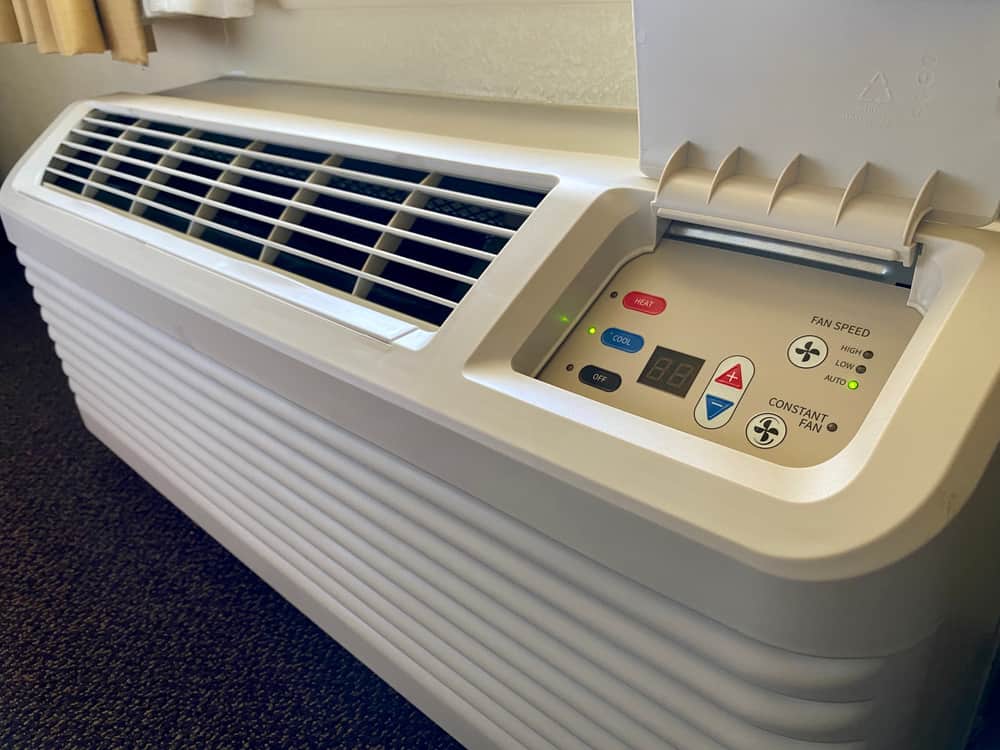Summary:
Common PTAC Problems NYC Homeowners Face
PTAC units in NYC face unique challenges. The constant temperature swings, city dust, and heavy usage patterns create specific problems you won’t find in suburban settings. Understanding these issues helps you spot trouble early.
Most problems fall into predictable categories. Your unit might stop heating or cooling effectively, start making unusual noises, or develop airflow issues. Water leaks are another frequent complaint, especially in older buildings where drainage systems haven’t been updated.
The key is recognizing that PTAC problems rarely appear overnight. They develop gradually, giving you time to address them before they become expensive emergencies.
Why Your PTAC Won't Heat in Winter
When your PTAC stops producing heat during a NYC winter, the problem is often simpler than you’d expect. In most cases, you’re dealing with a small component called an actuator that controls water or steam flow through the heating coils.
This little device sits on the pipes connected to your PTAC unit. When it fails, hot water or steam can’t reach the coils, leaving you with cold air instead of the warmth you need. The frustrating part? Some repair companies charge anywhere from $400 to $800 for what’s essentially a straightforward fix.
Before calling for service, check your thermostat settings and ensure the unit is set to heat mode. Look for any obvious blockages around the unit, and make sure your circuit breaker hasn’t tripped. If these basics check out, the actuator is likely your culprit.
The good news is this repair doesn’t require major surgery on your unit. A qualified technician can typically handle it on-site without removing your PTAC or disrupting your living space. The key is finding someone who understands PTAC systems specifically, rather than a general HVAC contractor who might overcomplicate the diagnosis.
Don’t let winter pricing pressure you into hasty decisions. Get quotes from multiple providers, and ask specifically about actuator replacement costs. A fair price for this repair should be significantly less than the inflated rates some companies charge during peak heating season.
Strange Noises and What They Mean
Your PTAC unit shouldn’t sound like it’s fighting for its life. When unusual noises start, they’re telling you something specific about what’s happening inside the system.
Grinding or scraping sounds usually point to fan or motor issues. The fan blades might be hitting something, or the motor bearings could be wearing out. These problems get worse quickly, so addressing them early saves you from more expensive repairs later.
Clicking or rattling noises often indicate loose components. Screws work loose over time, especially in units that see heavy use. Sometimes it’s as simple as tightening a few connections, but other times it signals that internal parts are beginning to fail.
Whistling or hissing sounds typically relate to airflow problems. Your filter might be clogged, or there could be blockages in the air passages. These issues affect your unit’s efficiency and can lead to compressor problems if ignored.
Water gurgling or dripping noises suggest drainage issues. Your condensate drain might be blocked, or the drain pan could be damaged. This isn’t just annoying – it can lead to water damage in your walls or floors.
The important thing is not to ignore these signals. PTAC units are generally reliable, but they need attention when they start communicating problems. Most noise issues are fixable without major expense, but only if you catch them before they cascade into bigger failures.
Essential PTAC Maintenance for NYC Homes
Maintenance isn’t glamorous, but it’s the difference between a PTAC that lasts 15 years and one that needs replacement after 8. NYC’s environment is particularly tough on these units, making regular care even more important.
The good news is most maintenance tasks are straightforward. You don’t need specialized tools or technical expertise for the basics. What you do need is consistency – these small actions add up to significant protection over time.
Think of maintenance as insurance. The time you spend on simple tasks now prevents the inconvenience and expense of emergency repairs later.
Filter Care and Cleaning Schedule
Your PTAC filter works overtime in NYC. Between city dust, pollen, and indoor pollutants, it’s constantly trapping particles that would otherwise circulate through your living space. This protection comes at a cost – filters get dirty fast and need regular attention.
Check your filter monthly, but plan to clean or replace it more frequently during heavy-use seasons. Summer and winter put extra demands on your system, which means more air movement and faster filter loading. A dirty filter doesn’t just affect air quality; it forces your unit to work harder, increasing energy costs and wear on internal components.
Cleaning most PTAC filters is simple. Remove the filter, rinse it with water, and let it dry completely before reinstalling. Some filters are disposable and should be replaced rather than cleaned. Check your unit’s manual or look for markings on the filter itself to determine which type you have.
Don’t skip this step because it seems minor. A clogged filter is one of the leading causes of PTAC problems. It restricts airflow, which can cause the evaporator coils to freeze up or the system to overheat. These secondary problems are much more expensive to fix than simply maintaining a clean filter.
Set a reminder on your phone or mark your calendar. Filter maintenance is the single most effective thing you can do to extend your PTAC’s life and maintain its efficiency. It takes five minutes and costs almost nothing, but the impact on your system’s performance is substantial.
Professional Maintenance vs DIY Care
Some maintenance tasks are perfect for homeowners, while others require professional expertise. Understanding the difference helps you save money on simple tasks while ensuring complex work gets proper attention.
You can handle filter changes, basic cleaning of exterior components, and visual inspections for obvious problems. These tasks don’t require special tools or technical knowledge, and doing them yourself keeps your unit running between professional visits.
Professional maintenance involves the internal components you can’t safely access. This includes cleaning the evaporator and condenser coils, checking refrigerant levels, testing electrical connections, and calibrating the thermostat. These tasks require specialized equipment and knowledge of PTAC systems.
The smart approach combines both. Handle the routine tasks yourself, but schedule professional maintenance annually or bi-annually depending on how heavily you use your unit. This gives you the best of both worlds – cost savings on simple tasks and expert care for complex systems.
Professional maintenance also includes diagnostic capabilities you can’t replicate at home. Technicians can identify developing problems before they cause failures, potentially saving you from expensive emergency repairs. They can also optimize your system’s performance in ways that reduce energy costs.
When choosing professional maintenance, look for providers who specialize in PTAC systems rather than general HVAC contractors. PTAC units have unique characteristics that require specific knowledge and experience. A provider who understands these systems will give you better service and more accurate diagnostics.
Keeping Your PTAC Running Reliably
PTAC repair and maintenance doesn’t have to be complicated or expensive. The key is understanding what you’re dealing with and taking action before small problems become big ones. Regular filter changes, attention to unusual noises, and professional maintenance when needed will keep your system running reliably for years.
Remember that PTAC systems are designed for durability, but they need proper care to reach their potential. The time and money you invest in maintenance pays back through lower energy costs, fewer repairs, and longer system life.
When you do need professional help, choose a provider who understands PTAC systems specifically. We’ve been serving NYC homeowners for over 50 years, combining the expertise of three industry leaders to deliver reliable PTAC service and repair throughout the area.




